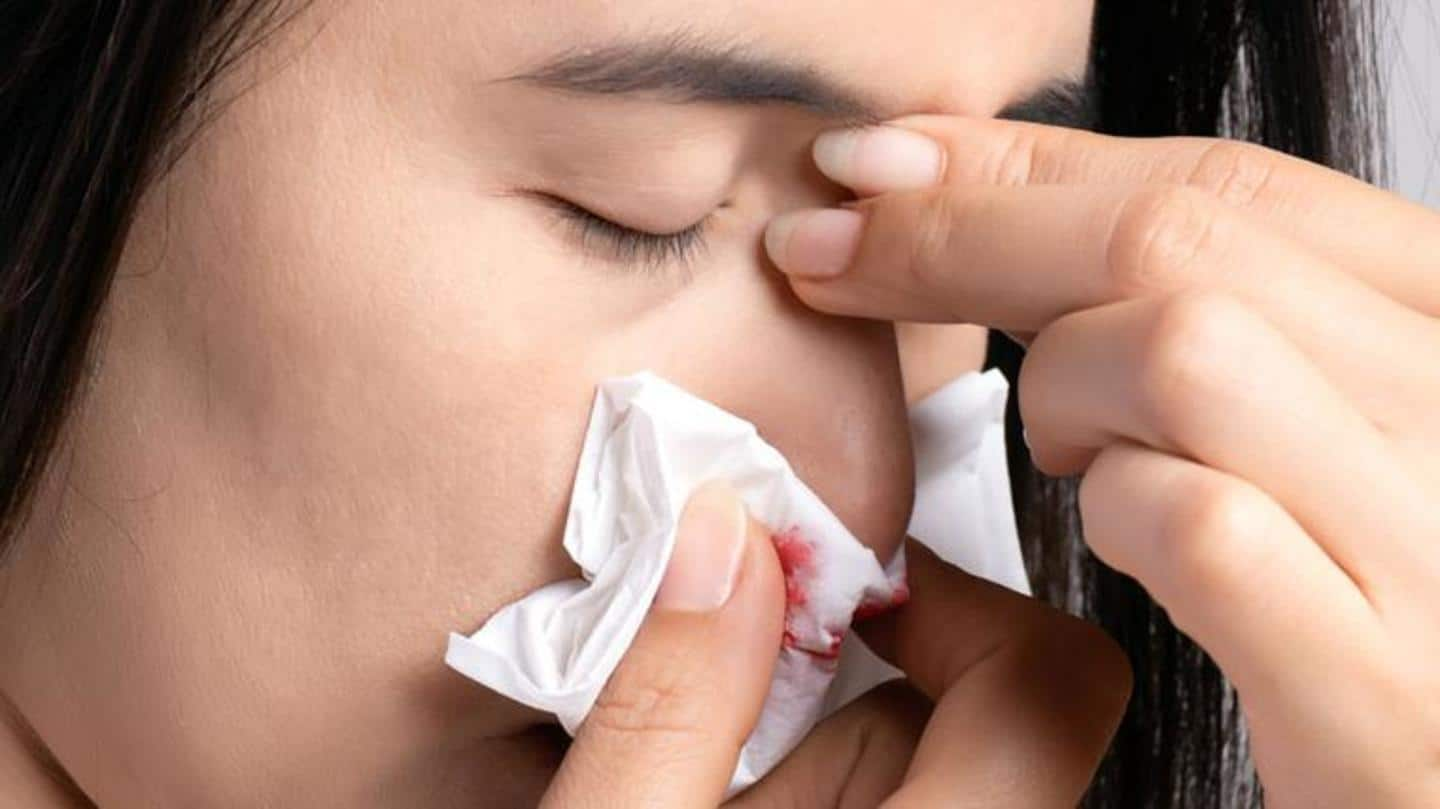
#HealthBytes: Nose bleeding after COVID-19 recovery; causes, prevention, and first-aid
What's the story
Nosebleeding is an increasingly common condition that is being reported by patients who have recovered from COVID-19 during the second wave of the pandemic. It is a very alarming symptom and a cause of concern for patients and their families. So what leads to nasal bleeding in COVID-19 patients? Read on to know more about its causes, prevention, and first-aid.
COVID-19
COVID-19 is caused by the SARS-CoV-2 virus
Only the most blessed people on this planet will still be in the oblivion of COVID-19 as the pandemic has impacted almost everyone. COVID-19 is a viral illness caused by the SARS-CoV-2 virus. The first human infection from the virus was reported in China in late 2019. Since then, over 18.4 crore cases have been reported worldwide with a little over 2% mortality.
Mechanism
The nasal epithelium is a common target for the virus
The SARS-CoV-2 enters the cells by attaching to the ACE-2 receptors that are found in different tissues of the human body, including the nasal epithelium. The presence of the virus activates the immune system and results in the immigration of inflammatory markers. This persistent inflammation of the mucosal lining has been observed in patients who recovered have from COVID-19 even five months after recovery.
Inflammation and trauma
Inflammation can lead to post recovery nosebleed
Inflammation results in an increased blood flow to the organ and when the nasal mucosa is infected, it causes bleeding of the nose. It is also observed that severely infected patients, who require supplemental oxygen, are at an increased risk of nosebleed. This is because prolonged use of high flow oxygen tends to dry out the nasal mucosa and this can cause bleeding, too.
Nasal prongs
Ill-fitting nasal prongs may aggravate the condition
Another common cause that leads to nosebleeds in patients who have recovered from COVID-19 is ill-fitting nasal prongs that are used for oxygen delivery. The nasal prongs can thus directly injure a very vascular region on the nasal septum that is known as the Little's area. Use of antibiotic ointments, adequate hydration, and judicious use of decongestants helps in speedy recovery.
First aid
If you experience nosebleeds, here's what you should do immediately
If your nose bleeds while or after recovering from COVID-19, lean forward and breath from the mouth, while pinching the soft part of the nose between the index finger and thumb for 10-15 minutes. You can also apply an icepack to the root of the nose and the malar region. However, if the situation persists, visit an ENT doctor to rule out other causes.